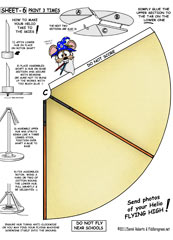
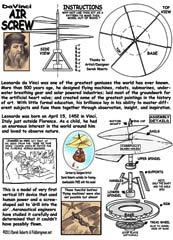

DaVinci-Airscrew - $$4.95
Though the first actual helicopter wasn’t built until the 1940s, it is believed that Leo's sketches from the late fifteenth century were the predecessor to the modern day flying machine. As with many DaVinci’s ideas, he never actually built and tested it – but his notes and drawings mapped out exactly how the device would operate.. Perfect 'A' magnet school project !!
DaVinci Aerial Screw Helicopter downloadable cardmodel
|
|
Leonardo DaVinci’s Helical Screw Helicopter (1480) could, until recent times, lay claim to being the first design of that type. However, it has now been established that the first recorded toy of this type dates all the way back to about year 1320 and had a rotor more like windmill sails. Though the first actual helicopter wasn't built until the 1940s, it is believed that Leonardo da Vinci’s sketches from the late fifteenth century were the predecessor to the modern day flying machine. |
|
Design, Drawing, and cartoon of the Fiddlersgreen DaVinci model thanks to Derek Roberts
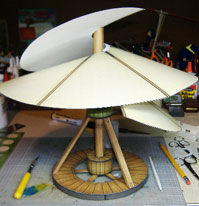 This is a little tribute to Bob Martin's struggle with our first DaVinci Air Screw version. Bless him for his much appreciated efforts. We've re-designed the model to make it easier to build and understand. This is a little tribute to Bob Martin's struggle with our first DaVinci Air Screw version. Bless him for his much appreciated efforts. We've re-designed the model to make it easier to build and understand. |
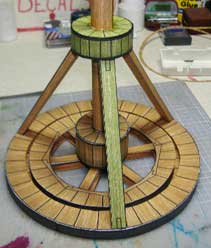 Modified base and shaft assembly. This allows the outer part of the base to rotate with the sails which would be required seeing the sails are rigged to the base by cables. This also requires that the upper hub be glued to the shaft as well. Looking closely at his drawings there does appear their may have been two platforms. Even with this modification there is no way this thing would ever work. Surely he knew this and was just visualizing the concept in the available technology of the day??? I notice looking at his drawings, he has the outrigger cables on the sails attached to the bottom platform????? Ain't gonna work!!!! Unless there are two separate bottom platforms?? Oh my brain hurts...... Bob Martin Modified base and shaft assembly. This allows the outer part of the base to rotate with the sails which would be required seeing the sails are rigged to the base by cables. This also requires that the upper hub be glued to the shaft as well. Looking closely at his drawings there does appear their may have been two platforms. Even with this modification there is no way this thing would ever work. Surely he knew this and was just visualizing the concept in the available technology of the day??? I notice looking at his drawings, he has the outrigger cables on the sails attached to the bottom platform????? Ain't gonna work!!!! Unless there are two separate bottom platforms?? Oh my brain hurts...... Bob Martin |
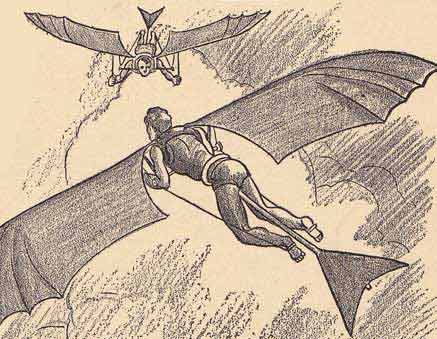
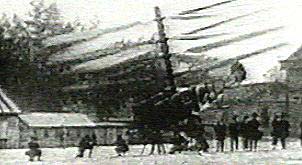 Famous inventions: The flying machine (also known as the "ornithopter") ideally displays his powers of observation and imagination, as well as his enthusiasm for the potential of flight. The design for this invention is clearly inspired by the flight of winged animals, which da Vinci hoped to replicate. In fact, in his notes, he mentions bats, kites and birds as sources of inspiration.
Famous inventions: The flying machine (also known as the "ornithopter") ideally displays his powers of observation and imagination, as well as his enthusiasm for the potential of flight. The design for this invention is clearly inspired by the flight of winged animals, which da Vinci hoped to replicate. In fact, in his notes, he mentions bats, kites and birds as sources of inspiration.
Perhaps the inspiration of the bat shines through the most, as the two wings of the device feature pointed ends commonly associated with the winged creature. Leonardo da Vinci’s flying machine had a wingspan that exceeded 33 feet, and the frame was to be made of pine covered in raw silk to create a light but sturdy membrane.
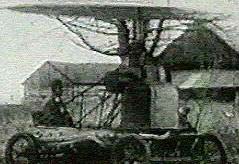 The pilot would lie face down in the center of the invention on a board. To power the wings, the pilot would pedal a crank connected to a rod-and-pulley system. The machine also had a hand crank for increased energy output, and a head piece for steering. As the busy pilot spins cranks with his hands and feet, the wings of the machine flap. The inspiration of nature in the invention is apparent in the way the wings were designed to twist as they flapped.
The pilot would lie face down in the center of the invention on a board. To power the wings, the pilot would pedal a crank connected to a rod-and-pulley system. The machine also had a hand crank for increased energy output, and a head piece for steering. As the busy pilot spins cranks with his hands and feet, the wings of the machine flap. The inspiration of nature in the invention is apparent in the way the wings were designed to twist as they flapped.
Unfortunately, as da Vinci himself might have realized, while the flying machine may have flown once it was in the air, a person could never have created enough power to get the device off the ground. (See early attempts on right)
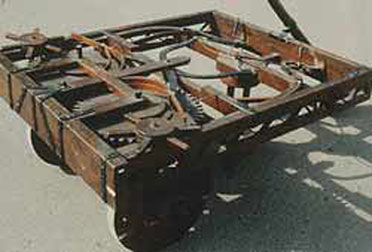 Before motorized vehicles were even a glimmer in someone’s eye, Leonardo da Vinci designed a self-propelled cart capable of moving without being pushed. Among its other accomplishments, many consider da Vinci self-propelled cart invention to be the world’s first robot. The self-propelled cart was one of the many inventions that Leonardo created dealing with locomotion and transportation. Historians later deduced that da Vinci specifically designed the cart for theatrical use. It's no Ferrari, but Da Vinci's designs for a self-propelled vehicle were revolutionary for his day. His wooden "car" moved by the interaction of springs with geared wheels,, It featured steering and brake capabilities. . Before motorized vehicles were even a glimmer in someone’s eye, Leonardo da Vinci designed a self-propelled cart capable of moving without being pushed. Among its other accomplishments, many consider da Vinci self-propelled cart invention to be the world’s first robot. The self-propelled cart was one of the many inventions that Leonardo created dealing with locomotion and transportation. Historians later deduced that da Vinci specifically designed the cart for theatrical use. It's no Ferrari, but Da Vinci's designs for a self-propelled vehicle were revolutionary for his day. His wooden "car" moved by the interaction of springs with geared wheels,, It featured steering and brake capabilities. .When the brake was released, the car would propel forward, and the steering was programmable to go either straight or at pre-set angles. Da Vinci’s cart design was so ahead of its time that its exact workings baffled scholars until late in the 20th century. But, in 2006, Italy’s Institute and Museum of the History of Science in Florence built a working model based on da Vinci’s design and, to the surprise of many, the cart actually worked. Some experts even noted that it looked similar to the Mars Land Rover. |
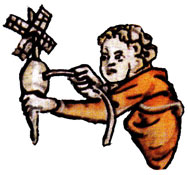 The first known depiction of a powered aircraft of any kind, is this illustration in an early 14th century Flemish manuscript showing a child winding up a string-pull helicopter. |
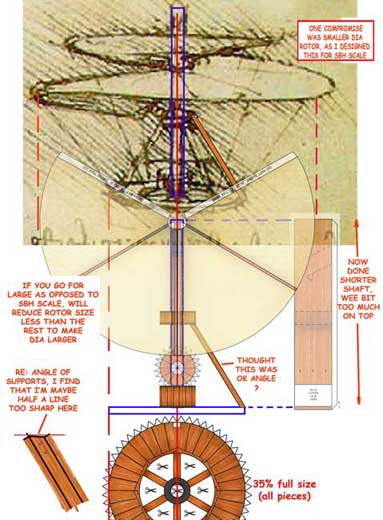 |
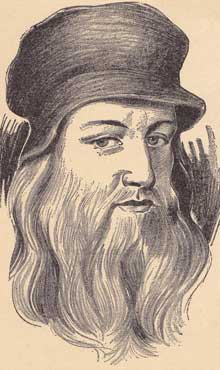 As an inventor, Leonardo took inspiration from things he saw around him. A child's toy that arrived in Europe from China may have inspired Leonardo to design this flying machine. The device used a screw-shaped sail to drill into the air just as a screw drills into other materials. Unfortunately, humans alone cannot generate enough lift to raise this heavy machine off the ground. Da Vinci scrawled next to his sketches of the screw-like machine the following description: "If this instrument made with a screw be well made – that is to say, made of linen of which the pores are stopped up with starch and be turned swiftly, the said screw will make its spiral in the air and it will rise high."
For all budding cardmodel designers our FG British designer, Derek, sent in the image to the left as part of the very important preliminary design process |
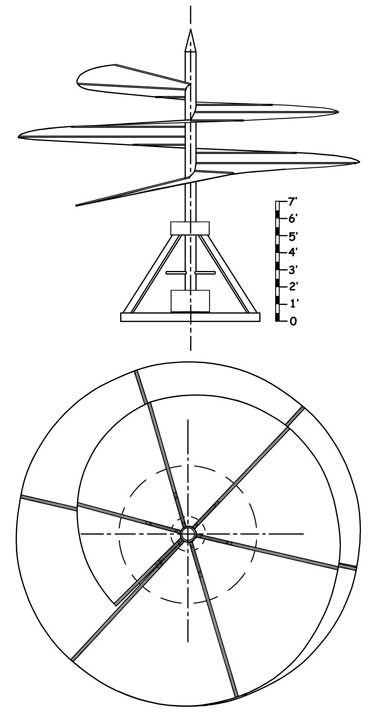 |
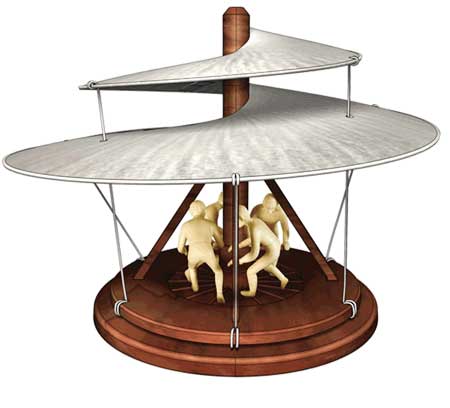 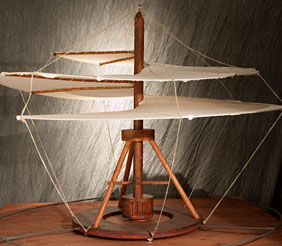 These are a couple DaVinci Aerial Screw models on the market. The one on the left would be flying into the ground! Its best not to try and figure out the design :) Da Vinci’s helicopter measured more than 15 feet in diameter and was made from reed, linen and wire. It was to be powered by four men standing on a central platform turning cranks to rotate the shaft. With enough rotation, da Vinci believed the invention would lift off the ground. Unfortunately, due to weight constrictions, modern scientists do not believe da Vinci’s invention would have been able to take flight. Some other intriguing facts about this Renaissance man: |
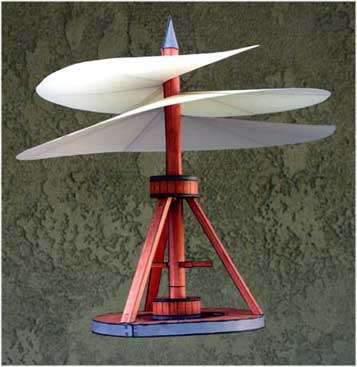 |
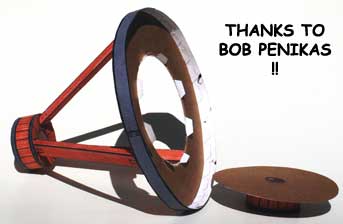 Thank you for the interesting model. This may be part of a presentation at one of the upcoming model and veteran's group meetings. The only "extra" step with this build is I added cardboard reinforcing the base and tread wheel. Bob Penikas |
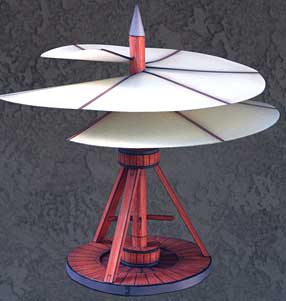 |
Leonardo was born on April 15, 1452 in Vinci, Italy just outside Florence. His beginnings were humble, as he was born the illegitimate son of a 25-year-old notary and a peasant woman. As an illegitimate child, he did not take his father's last name and was therefore known as Leonardo from Vinci or Da Vinci. By 1482, he was in the service of the Duke of Milan, not simply for his artistic talents, but for his clear engineering prowess and scientific genius. Leonardo designed weaponry, buildings and machinery and produced studies on nature, mechanics, anatomy, architecture and much, much more. As his scientific work progressed, Leonardo documented it in notebooks. He left behind thousands of pages of notes filled with designs, ideas and discoveries. Most of what he wrote has been lost to history, but the notebooks that remain are tantalizing clues in a detective story that has obsessed scholars, engineers, and artists for centuries. Written in strange backwards handwriting, they hold a mirror up to the mind of Leonardo and reveal a man who was as much a dreamer as a doer and a man whose insights live on today. (Cartoon of urchin powered DaVinci aero-screw by the designer, Derek Roberts) Some more fun facts about this Renaissance man: |
Watch Leo's Screw Copter on You-Tube
(LARGE FG version shown below)
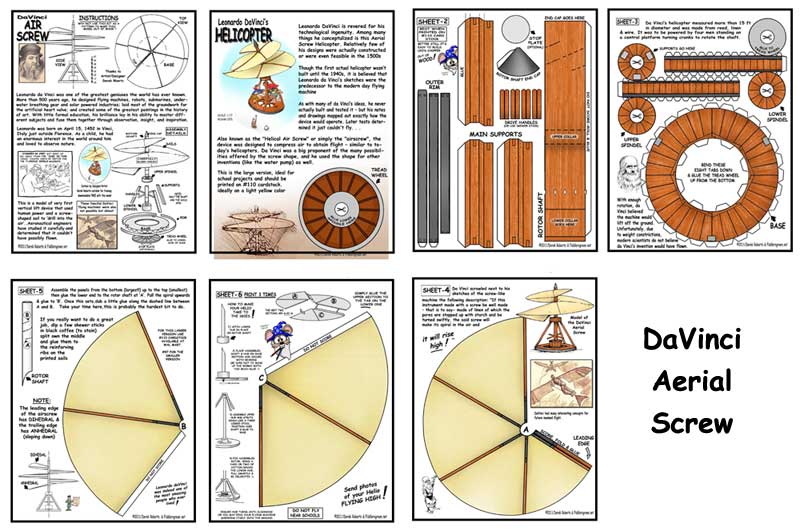
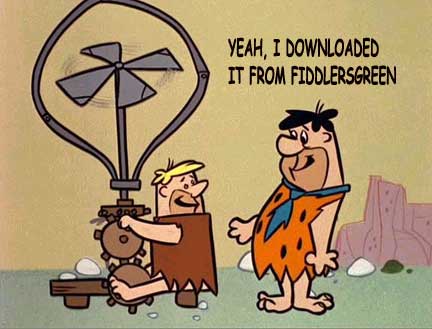



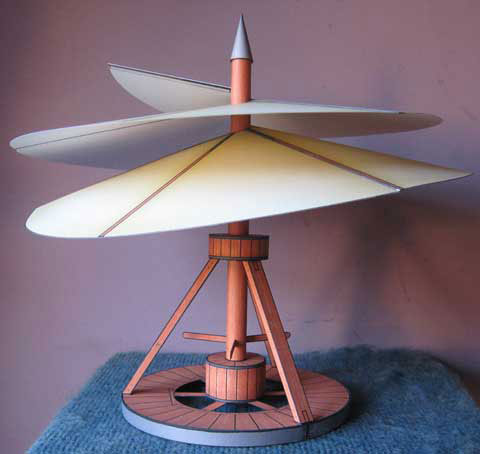
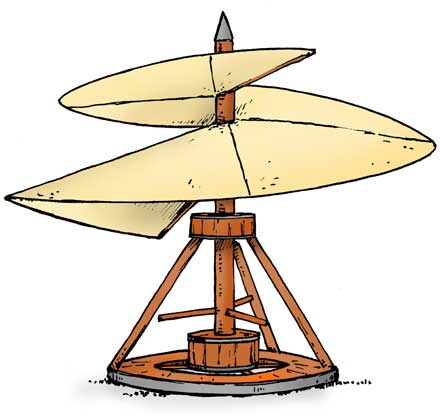
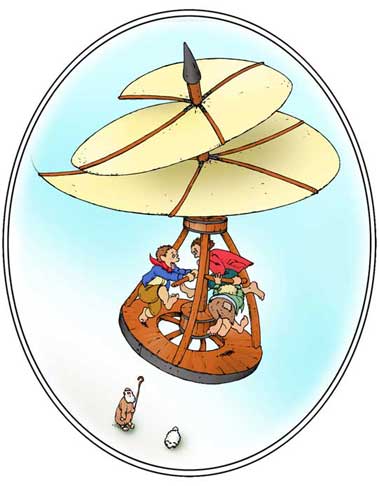 Leonardo da Vinci was one of the greatest geniuses the world has ever known. More than 500 years ago, he designed flying machines, robots, submarines, underwater breathing gear and solar powered industries; laid most of the groundwork for the artificial heart valve; and created some of the greatest paintings in the history of art. With little formal education, his brilliance lay in his ability to master different subjects and fuse them together through observation, insight, and inspiration.
Leonardo da Vinci was one of the greatest geniuses the world has ever known. More than 500 years ago, he designed flying machines, robots, submarines, underwater breathing gear and solar powered industries; laid most of the groundwork for the artificial heart valve; and created some of the greatest paintings in the history of art. With little formal education, his brilliance lay in his ability to master different subjects and fuse them together through observation, insight, and inspiration.